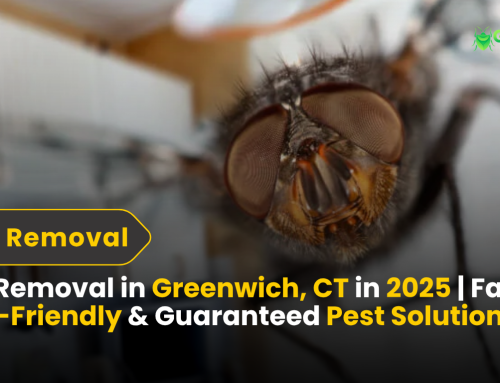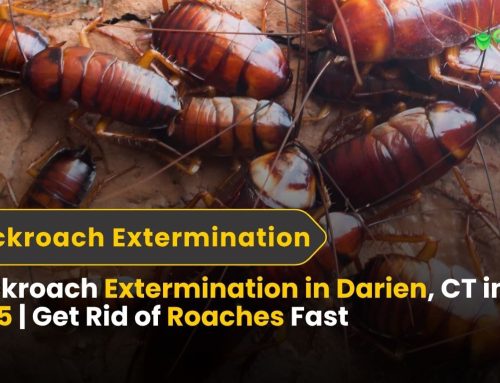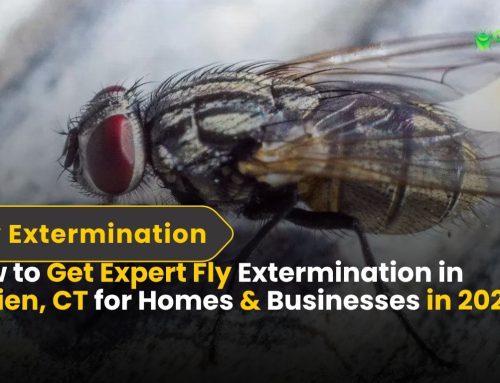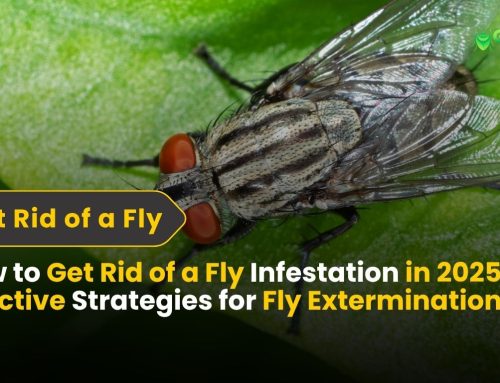Are Indian Meal Moths Harmful to Humans? Risks, Effects, and Prevention
Indian Meal Moths, often called pantry moths, are among the most common pests to invade households, particularly kitchens and pantries. Known for infesting stored food products such as grains, nuts, cereals, and dried fruits, these moths can quickly contaminate food supplies, causing both inconvenience and frustration for homeowners. Their presence is often first noticed through webbing in food packaging, visible larvae, or adult moths fluttering around your pantry.
While Indian Meal Moths are not directly harmful to humans, they can still pose indirect issues. These pests do not bite, sting, or spread diseases, but their larvae contaminate food with webbing, fecal matter, and shed skins. Consuming infested food may cause mild gastrointestinal discomfort in some individuals, and rare cases of allergic reactions to their webbing or droppings have been reported.
This guide explores the potential risks associated with Indian Meal Moths, their impact on homes, and effective methods for prevention and control. By understanding their behavior and taking proactive measures, you can protect your pantry, maintain food safety, and prevent future infestations.
What Are Indian Meal Moths? Identification, Behavior, and Prevention
Indian Meal Moths (Plodia interpunctella) are small, pesky insects that typically infest dry, stored food items such as grains, cereals, nuts, dried fruits, and pet food. These moths undergo four stages of development: egg, larva, pupa, and adult. The larval stage is when the most damage occurs, as the larvae feed on stored food, contaminating it with webbing, fecal matter, and shed skins.
As the larvae mature, they spin silk-like webbing, which can be found inside food packaging or on pantry shelves. The adult moths, which are about ½ inch long with gray wings and reddish-brown tips, are typically seen fluttering around the pantry.
Indian Meal Moths are not harmful to humans directly, but they can make food inedible, leading to wasted supplies. Infestations can spread quickly, and regular monitoring and preventive measures are essential to keeping them out of your pantry and preventing contamination.
Are Indian Meal Moths Harmful to Humans? Risks and Safety Concerns
1. Direct Harm to Humans
Indian Meal Moths do not bite, sting, or transmit diseases to humans. Unlike mosquitoes or ticks, they do not pose a direct risk of physical harm or disease transmission. While they can contaminate food with webbing and fecal matter, causing inconvenience and mild gastrointestinal issues if consumed, they do not pose a significant threat to human health. Their primary impact is on food safety and pantry cleanliness.
2. Contamination of Food
While they don’t harm humans directly, Indian Meal Moths can contaminate food products. Larvae leave behind webbing, droppings, and sometimes dead insects in food, making it unfit for consumption. Ingesting contaminated food may cause discomfort or mild gastrointestinal distress, particularly in people with sensitivities.
3. Allergies
Some individuals may experience allergic reactions to Indian Meal Moth droppings, shed skins, or webbing. These reactions are rare but can include mild respiratory irritation or skin sensitivity. While not common, people with allergies or respiratory conditions may be more susceptible to these symptoms. It’s important to address infestations promptly to minimize exposure to moth-related allergens and maintain a clean, safe living environment.
4. Psychological Impact
Dealing with an Indian Meal Moth infestation can be stressful. The sight of larvae crawling in food or adult moths flying around your pantry can cause anxiety and disrupt your daily routine. The contamination of food supplies can also lead to frustration, making it essential to address infestations quickly to restore peace and cleanliness in your home
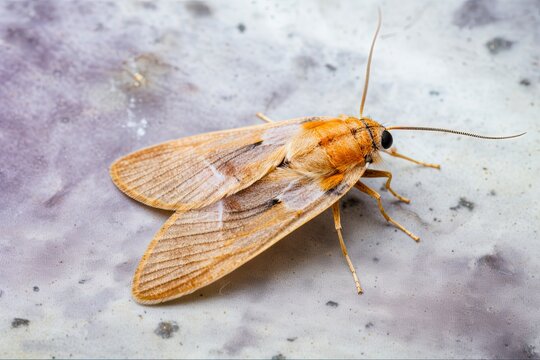
How Indian Meal Moths Enter Your Home
Indian Meal Moths are notorious for infiltrating homes and contaminating food supplies. They can enter your home in several ways, and understanding these entry points can help you take preventive measures. Here are the common routes through which Indian Meal Moths enter your home:
1. Infested Food Products
Indian Meal Moths often enter homes through infested food products. Dry goods such as grains, cereals, nuts, dried fruits, and pet food are common sources. These items may already contain eggs or larvae when purchased from the store, which then hatch and infest your pantry. Always check food packaging before buying and consider freezing new dry goods for a few days to kill any potential larvae.
2. Cracks and Crevices
Moths can also enter through small cracks or gaps in walls, windows, or doors. Even minor openings around window frames or door seals can be enough for moths to make their way inside. Sealing these openings with weatherstripping or caulk can help reduce the chances of an infestation.
3. Outdoor Exposure
Food stored improperly outside, in garages, or on patios is susceptible to infestation. Moths can easily find and infest improperly stored food. Always store dry goods in airtight containers and avoid leaving food exposed to the elements.
Signs of an Indian Meal Moth Infestation
Detecting an Indian Meal Moth infestation early can help you address the problem before it worsens. Here are some common signs to look for:
1. Visible Larvae
One of the most noticeable signs is the presence of larvae. These small, cream-colored caterpillars can be seen crawling in food or on pantry surfaces. They are usually found feeding on grains, nuts, and dried fruits.
2. Webbing
Indian Meal Moth larvae produce silk-like webbing, which can be seen inside food packaging or along pantry shelves. This webbing is a clear indicator of an infestation and often contaminates food with fecal matter and shed skins.
3. Flying Moths
Adult moths are typically gray with bronze-colored tips on their wings. You may spot them fluttering around your pantry or food storage areas, especially during the evening.
4. Unusual Odors
Contaminated food can emit a musty or stale smell. This odor is caused by the larvae feeding on and contaminating food with their waste products.
Preventing and Controlling Indian Meal Moths In Connecticut
1. Proper Food Storage
- Store dry goods in airtight containers made of glass, metal, or sturdy plastic.
- Avoid using cardboard or thin plastic bags, as larvae can easily chew through them.
2. Inspect New Purchases
- Check food packaging for holes, webbing, or visible larvae before purchasing.
- Freeze new dry goods for 3-4 days to kill any potential eggs or larvae.
3. Regular Cleaning
- Wipe down pantry shelves with a mixture of vinegar and water.
- Vacuum cracks and crevices where eggs and larvae might hide. Dispose of the vacuum bag immediately.
4. Pheromone Traps
- Use pheromone traps to attract and trap adult moths. These traps disrupt the breeding cycle and help reduce infestations.
5. Declutter Your Pantry
- Remove all food items and discard anything infested. Ensure you seal infested items in garbage bags before disposal to prevent spreading.
6. Professional Assistance
- For severe infestations, consider hiring pest control professionals who can provide targeted treatments and preventive strategies.
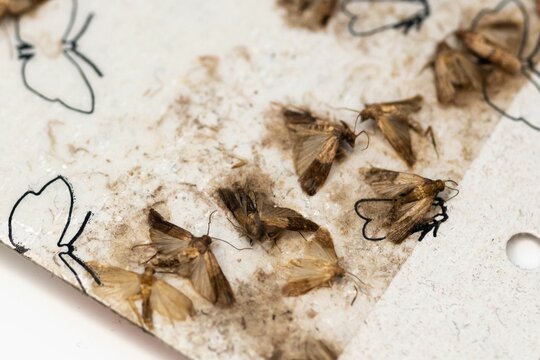
FAQs About Indian Meal Moths
1. Can Indian Meal Moths make you sick?
While they don’t transmit diseases, consuming contaminated food may lead to mild gastrointestinal discomfort.
2. Do Indian Meal Moths bite humans?
No, Indian Meal Moths do not bite, sting, or cause physical harm to humans.
3. How long do Indian Meal Moths live?
Adult moths live for about 1-2 weeks, while the entire lifecycle (egg to adult) lasts around 6-8 weeks, depending on environmental conditions.
4. Are Indian Meal Moths harmful to pets?
Contaminated pet food can be a problem for pets, as it may irritate their stomach. Always store pet food in airtight containers to prevent infestations.
5. How can I permanently get rid of Indian Meal Moths?
The key to eliminating Indian Meal Moths is thorough cleaning, proper food storage, and consistent monitoring. Sealing entry points and using traps can also help prevent reinfestation.
Final Thoughts :
Indian Meal Moths are not directly harmful to humans, as they do not bite, sting, or transmit diseases. However, their presence in your home can lead to food contamination, mild allergies, and psychological distress. The primary risk comes from the damage they inflict on stored food supplies, including grains, cereals, nuts, and dried fruits. Their larvae feed on these items, leaving behind webbing, fecal matter, and shed skins, making the food unsafe for consumption.
While the health risks are minimal, the psychological toll of discovering an infestation—along with the hassle of cleaning and discarding contaminated food—can be significant. Additionally, people with allergies or respiratory conditions may experience mild symptoms due to exposure to moth droppings and webbing.
To prevent Indian Meal Moths, it’s essential to understand their lifecycle and behavior. Regular cleaning, proper food storage in airtight containers, and proactive monitoring can significantly reduce the chances of an infestation. If you do find an infestation, act promptly to remove moths and larvae through natural methods like freezing or heating affected food. If these methods don’t work, consult a pest control professional who can provide tailored solutions to eliminate the problem and protect your pantry. By taking the right steps, you can maintain a safe, pest-free environment for your family.

